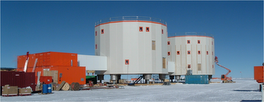Sunday seismometer #7
Great Pendulum or "19-Tons"
In the last Sunday seismometer post on the Vicentini seismograph, we mentioned that in order for a seismograph to overcome the friction caused by a purely mechanical recording system, it needs a large mass.
The Vicentini instruments actually have the smallest masses (100 kg for the horizontal and 50 kg for the vertical) of the mechanically recorded seismographs we have described so far. The Mainka instrument has a 450 kg mass, the Wiechert horizontal instrument has a 1-ton (1000 kg) mass, and the Wiechert vertical instrument has a mass of 1.2 tons.
The largest mass of all the seismometers in the Strasbourg museum is that of the Great Pendulum: an impressive 19 tons (that is 19 000 kg)!

Its construction was started before the First World War (1910), when the Strasbourg Observatory was part of Germany. The idea was to build an instrument that would be similar to one installed in Göttingen, a 17-Ton seismograph. After the war, Strasbourg became French, and it was the French director of the Observatory, Edmond Rothé, who completed the construction of the Great Pendulum in 1925.

The mass itself is essentially made up of scrap metal from the War, including 12 tons of axles from military trucks and 2 tons of weapon parts.
The 19-Ton has a natural period of 2 seconds, and records both the horizontal directions of motion, like the Wiechert horizontal instrument. Also like the Wiechert, its motion is damped by air pistons.

The smoked paper recording system was abandoned in 1970 in favor of galvanometric recording. In 1987 the recording system was changed once again to digital recording using displacement detectors.
The 19-Ton instrument is still in working order today, and is a great favorite with visitors to the Strasbourg Seismology Museum.




2 comments:
Hi Alessia,
Since some times, I read your posts with great interest, expecting each fresh news from the Antartic Territories, and I would like to thank you for thoses images you bring back from the great south.
This post is an occasion for me to say that at the Martinique Volcanic Observatory, we have kind a similar seismometer. It weights 20 tons, and it is a tri-axial instrument. I don't think it is damped but I know it as been thermally corrected with water dropping on the mass. It has been built by Quervain and Picard in 1936 and is not in a functioningf state (it didn't appreciated the 29/11/2007 earthquake).
I hope to see soon new photos from the south.
jean-Marie SAUREL.
Hi Jean-Marie,
it's good to hear from you! I hope the Martinique is treating you well.
Thank you for the information about the 20-Ton instrument over there.
As far as I know, Quervain and Picard also built a 21-Ton instrument in Zurich, sometime before the Strasbourg one.
New photos from Antarctica will be coming soon: I shall be heading down there again in December.
Post a Comment